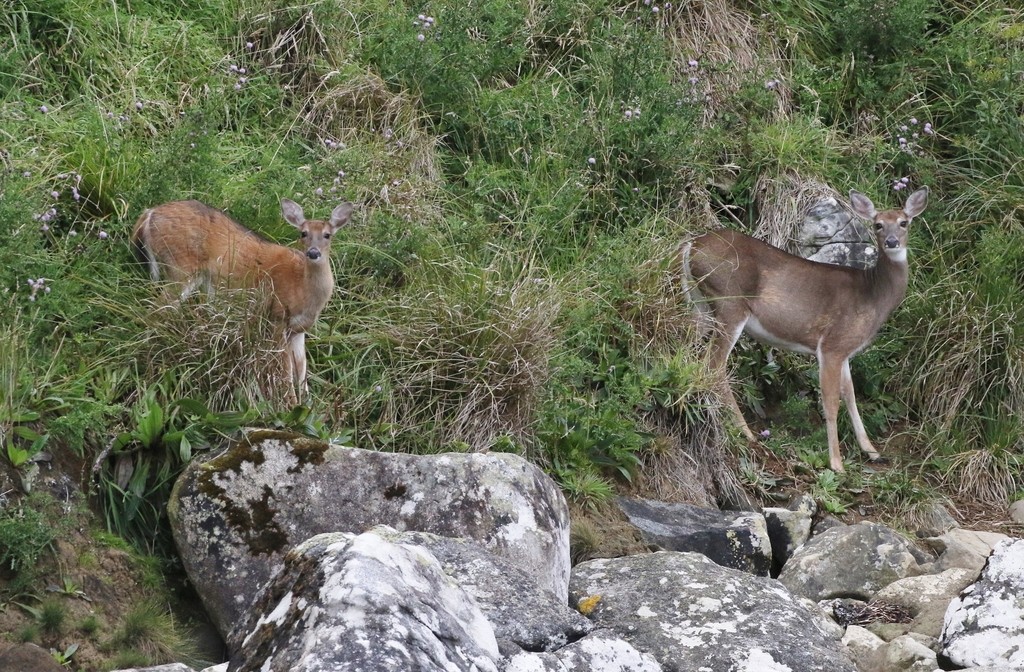White-tailed deer
A species of Hollow-tooth, Also known as Virginia deer, Bulls island white-tailed deer, Dakota white-tailed deer, Columbian white-tailed deer Scientific name : Odocoileus virginianus Genus : Hollow-tooth
White-tailed deer, A species of Hollow-tooth
Also known as:
Virginia deer, Bulls island white-tailed deer, Dakota white-tailed deer, Columbian white-tailed deer
Scientific name: Odocoileus virginianus
Genus: Hollow-tooth
Content
Description General Info
 Photo By silversea_starsong , used under CC-BY-NC-4.0 /Cropped and compressed from original
Photo By silversea_starsong , used under CC-BY-NC-4.0 /Cropped and compressed from original Description
The deer's coat is a reddish-brown in the spring and summer and turns to a grey-brown throughout the fall and winter. The deer can be recognized by the characteristic white underside to its tail. It raises its tail when it is alarmed to warn the predator that it has been detected. A population of white-tailed deer in New York is entirely white (except for areas like their noses and toes)—not albino—in color. The former Seneca Army Depot in Romulus, New York, has the largest known concentration of white deer. An indication of a deer age is the length of the snout and the color of the coat, with older deer tending to have longer snouts and grayer coats. Strong conservation efforts have allowed white deer to thrive within the confines of the depot. White-tailed deer's horizontally slit pupils allow for good night vision and color vision during the day. 
General Info
Lifespan
3-20 years
Diet
White-tailed deer is primarily a herbivorous species, heavily reliant on foliage. Its diet is diversified including twigs, shoots, leaves, as well as fruits and nuts. Throughout the seasons, white-tailed deer adjusts its diet depending upon the availability of nutritious vegetation.
Appearance
White-tailed deer are medium-sized mammals with a sleek, elongated body shape. They possess a dense coat varying from grey-brown in winter to reddish-brown in summer, with a white underside. Their most striking features are the long, tapering antlers found in males, which regrow annually. Fawns are noted for their unique white-spotted coat that disappears as they mature.
Behavior
White-tailed deer is a crepuscular species, known for its nocturnal foraging in solitary or small groups, favoring vegetation-filled environments. The males display rut behavior, fighting for access to the females in breeding season. This species also marks territory with scent glands on their hind legs.
Population
Stable